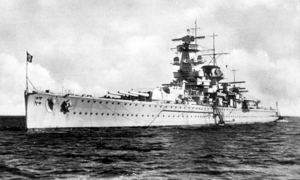
Aug 08 2025.
views 11It’s an early start. The ferry goes at 7:15 a.m. from the seaport of Buenos Aires, which means a wake-up call at five a.m. The taxi is there; I swear he drives round the block a few times, as the port is so close. We check in with ease and head for Uruguay via the river estuary and the sea beyond. Important to me is the visit to a new city: Montevideo. It’s a city that, for some reason, has always conjured up intrigue, spies, and Nazi survivors.

In 1939, a famous sea battle took place just after the start of World War II. The Admiral Graf Spee, the top and latest of the German pocket battleships, made a dramatic but strategic journey across the Atlantic to South America. Its main aim was to create the impression that Germany had a fleet of ships in the area, by sinking merchant ships supporting supplies to the British and its allies in Europe. The captain on this lone-wolf operation was Hans Wilhelm Langsdorff. He already had a distinctive German navy career. He swiftly sank numerous cargo ships leaving South America. Before he sank them, he told their crew to abandon ship. In many cases, he even picked up those who had abandoned their vessels.
Langsdorff was finally pursued by three small cruisers of the British navy, commanded by Commodore Harwood. The British top-ranking tactician knew the east coast of South America well. In the massive river estuary to the open sea, the British outmanoeuvred the large German ship. At one point, Langsdorff could have blown HMS Exeter out of the water, it was incapacitated. He chose not to destroy more lives and carried on. His own ship then sustained sufficient damage, he decided to bring her into the neutral port of Buenos Aires. Langsdorff was given limited time in the neutral port, according to the international laws that prevailed.
He also fell foul of the British, in particular Eugen Millington-Drake, a British diplomat, who ensured the Germans received fake news; as we might call it today, that there was a fleet of British ships waiting for the Graf Spee to come out of the port estuary to open sea. Worse still, he would be forced to take his ship out to sea with limited fuel.
They say Hitler had told the captain to destroy Buenos Aires if the government forced Langsdorff to go back out towards the sea, as he was in a neutral port. Langsdorff could have gone down fighting and taken on the British, who in reality now only had two small ships waiting for the Graf Spee.
The German captain took his ship out to what he thought was deep water. The reality was it was shallow. He scuttled the ship after ensuring all the crew had left safely. This action not only saved the lives of his own crew, but also those of the British crews waiting out at sea. It had been imperative to scuttle the Graf Spee to ensure much of the latest German technology was not secured by the British.
Langsdorff, some days later, after ensuring his crew were safe and well looked after, shot himself. Not draped in the swastika flag, but in the German flag. An honourable man with an amazing capacity for other people’s lives. The world later hailed him as a true leader and humanitarian.
I had stood in front of his grave the day before, knowing the story with somewhat of a tear in my eye. He is buried in one of the world’s largest cemeteries. The La Chacarita Cemetery has some 230 acres, including British and German war sections operated independently. Get a cab to the classic Imperio Café to start your taphophile day.
As the fast ferry turns into Montevideo after some 90 minutes, I think of those sailors and the people of Buenos Aires who owe much to one man: HANS WILHELM LANGSDORFF.
Getting off the ferry at Montevideo, driving out of the port area, I spot the Graf Spee rangefinder up against a wire mesh fence, painted in naval grey. The anchor and the bronze swastika have also been salvaged in recent years. There is a desire by the government to raise the ship and make it a museum piece, as it sank with no loss of life. I think it's an excellent idea to promote the concept of honour and duty to the masses, stopping the senseless loss of life. Many of today’s world leaders still take the warmongering route. We are closer to a third world war than in eighty years.
0 Comments